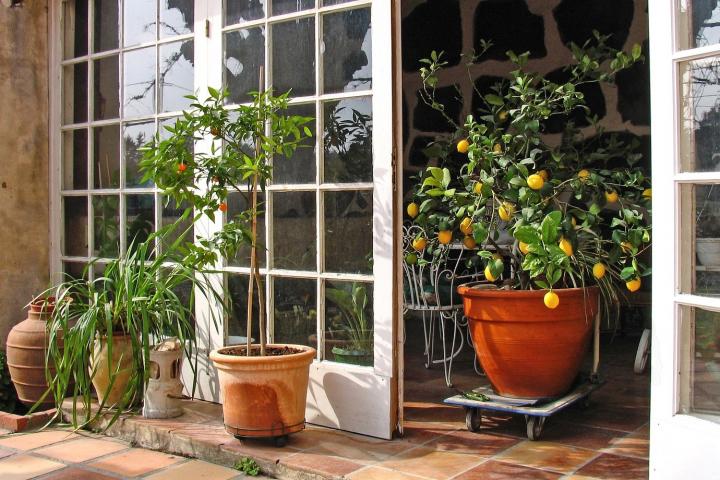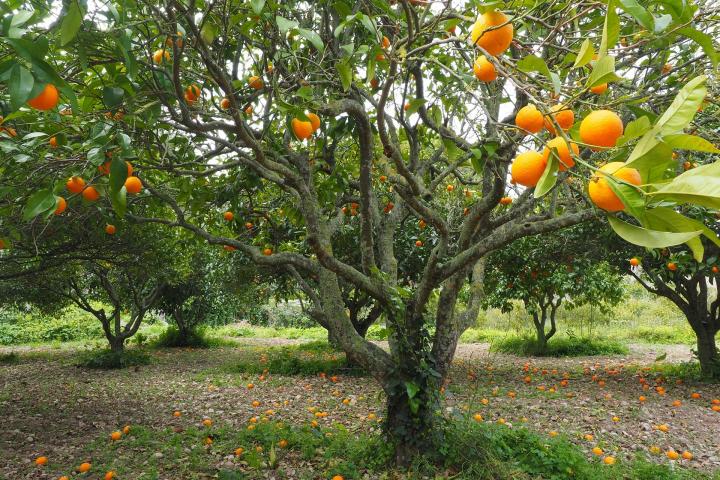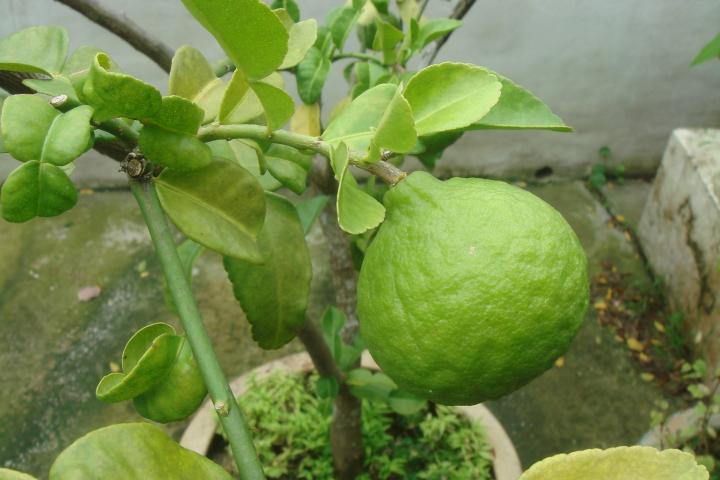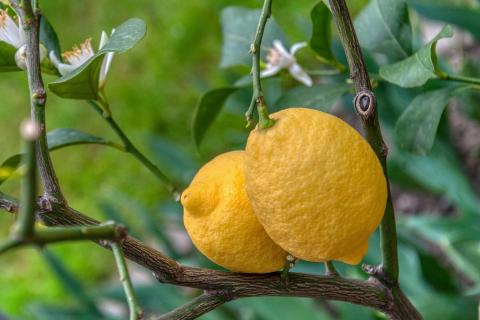Although Citrus is a subtropical genus, fragrant and flavorful citrus fruit can be grown almost anywhere. From lemons and limes to oranges and grapefruit, citrus trees are fun and rewarding plants to grow—but not without some work! Here’s how to grow citrus trees at home.
About Citrus
Citrus plants are native to tropical and subtropical regions of southern Asia, Australia, and the South Pacific, but have been brought to all corners of the globe thanks to human cultivation. These woody plants range in size from small shrubs to large trees, and their fruit is just as variable in size and shape—just take a walk down the fruit aisle at your local supermarket! Standard-size grapefruit and orange trees can grow 18 to 22 feet tall, whereas dwarf citrus varieties only grow 8 to 12 feet tall (or smaller, if kept in containers).
Gardeners in the warmest parts of the United States (USDA Hardiness Zones 8-11) can grow citrus outdoors year round, while colder-climate gardeners (Zones 7 and colder) should consider growing lemons, oranges, limes, and other dwarf citrus trees in containers to enjoy fresh citrus fruit, too. Read more about growing citrus in containers here.

Most citrus varieties are self-fertile, so only one tree is typically needed for fruit production. On average, fruit bearing begins when the trees are between 3 and 6 years old. However, exact timing will depend on the type of citrus, the cultivar, your climate, the health of the plant and its care, and other factors. Flowering is not seasonal, but occurs during warm weather and regular rainfall. In fact, flowers and fruits may appear on the plant at the same time!
When to Plant Citrus Trees
- Early spring is the best time to plant citrus trees outdoors in the parts of North America where they can be grown outside (Zones 8-11), since they’ll have the entire summer to settle in before cooler weather arrives. If frosts occur in your area, wait to plant until a spring frost is no longer a threat.
- In the citrus belt (a loosely defined area including southern California, parts of Arizona and Texas, and Florida), trees can be planted at any time of the year.
- Citrus can be planted indoors in containers at any time of the year.
Choosing and Preparing a Planting Site
- Warmth helps citrus fruit mature and sweeten, so citrus trees should be planted in a warm, sunny, and wind-protected area—planting along the southern side of a house or other structure will provide all three features. In cases where sweetness isn’t a concern (with lemons and limes, for example), extra warmth is less important.
- Citrus trees need well-draining soil. If they sit in too much water, the roots can rot. If the soil is not well-drained, plant the trees on a slight mound to prevent waterlogging.
- Citrus trees prefer slightly acidic soil, so consider testing the pH of your planting site and amending accordingly.
- Standard-size citrus trees should be spaced 12 to 25 feet apart and dwarf citrus trees should be set 6 to 10 feet apart. The exact distance depends on the variety. The bigger the fruit, the farther the distance.

How to Plant Citrus Trees
- After unwrapping or removing the tree from its container, first inspect the root ball. If the roots seem tangled or like they’re growing in circles, gently score up and down the sides of the root ball several times with a knife. This breaks up the bound roots and encourages them to grow outward.
- Dig a hole that’s about 1.5 times the width of the root ball and about as deep as the root ball is tall. Like most trees, citrus trees should be planted slightly above the depth that they were at in the container; planting too deeply can cause water to pool around the trunk, leading to rot and disease. Planting slightly higher than the surrounding soil ensures that water will run away from the trunk.
- Note: If planting a grafted variety of citrus, make sure that the graft union is 4 to 6 inches above the soil level. If planted too close to the ground, roots may form from the graft union, defeating the whole purpose of grafting!
- Place the tree in the hole and backfill with soil. When the hole is half filled, spray with water to settle it and flush out air pockets, then continue filling with soil. Water again to settle the soil after the hole is filled.
- Tip: Do NOT add special soil or fertilizer to the planting hole. It’s best to let the tree get used to the soil nutrient levels and consistency that are already present in the planting site.
Starting Citrus Trees from Seed
Citrus trees can be started from seeds, but they usually don’t breed true, which means that you may not get the same quality fruit! It’s also possible that citrus trees grown from seed won’t flower or fruit at all. Nonetheless, growing a citrus tree from seed is a fun experiment.
- To start citrus trees inside from seeds, remove the seeds from the desired fruit. Soak the seeds overnight in water and plant them 1/2 inch deep in moist potting soil.
- Cover the pot with a plastic bag or wrap and let it sit in a warm and sunny spot for a few weeks until the seeds start to grow. Then, remove the plastic but keep the pot near a warm and sunny window as the seedlings grow.
How to Care for Citrus Trees
- A few weeks after planting, and for the first few years (before fruit-bearing age), feed the tree a balanced (such as 10-10-10) fertilizer. Learn more about soil amendments and preparing soil for planting.
- For newly fruit-bearing trees, provide nutrients to continue branch and leaf growth, but also to replace nutrients lost by fruit forming. A “citrus blend” fertilizer is ideal.
- Check manufacturer’s directions, ask a garden nursery, or consult your local cooperative extension as to how often and how much fertilizer to apply during each year of a tree’s growth.
- Because of citrus’ shallow roots, mulches are not recommended for citrus trees. If the trees are located in a cultivated garden bed where mulch is used, keep at least 12 inches of bare ground between the tree trunk and the mulch. Pre-emergent herbicides (NOT post-emergent) may be used sparingly around mature trees to prevent weed seeds from germinating, but hand-weeding is preferred. (If using herbicides, be sure to follow dosage and application instructions carefully.)
- Don’t plant groundcover plants around the base of citrus trees, as the trees have shallow roots that will struggle to compete for nutrients.
- Citrus trees bloom in the spring and fruit starts to develop shortly thereafter.
- Fruit thinning is unnecessary for citrus trees, as they typically experience something called the “June drop.” In late spring or early summer (May or June for most of the country), citrus trees naturally drop a number of their immature fruit, which allows the tree to focus its energy on maturing the rest of its fruit.
- Aphids
- Spider Mites
- Root and Crown Rots
- Fungal Leaf Spots
- Fruit Flies
- Tristeza Virus spread by Aphids
Grapefruits – ‘Red Blush’ (pink flesh), ‘Marsh Seedless’ (white flesh), and ‘Star Ruby’ (red flesh)
Lemons – ‘Eureka’ and ‘Sun Gold’https://www.almanac.com/content/how-make-pomander-balls
Limes – ‘Bearss’ and ‘Rangpur’
Mandarins – ‘Clementine’ and ‘Satsuma’
Sour Oranges – ‘Bouquet de Fleurs’ and ‘Seville’
Sweet Oranges – ‘Valencia’ (Valencia), ‘Ruby’ (Blood), and ‘Washington’ (Navel)
Tangelos – ‘Minneola’ and ‘Orlando’
How to Harvest Citrus
- The length of time required for the fruit to ripen depends on the type of citrus and the cultivar. Some oranges can take up to 15 months to mature fully, while others need only 8-12 months.
- Citrus fruits will not ripen off the tree, so refrain from picking them too early.
- The best indicator of ripeness is taste.
- Harvest the fruit by cutting them off with pruning shears or by pulling the fruit stalk from the tree.

How to Store Citrus Fruit
- Undamaged citrus fruits can be stored for 3 to 8 weeks at normal refrigerator temperatures.
- Prolonged exposure to cold temperatures can decrease the fruit’s quality, so consider leaving the fruit on the tree and only harvesting when needed.
- Make your own air freshener: Slice some lemons, cover with water, and let simmer in a pot for about an hour.
- Make pomander balls for the holiday season.
- See more household uses for lemons.




